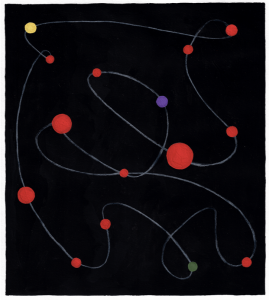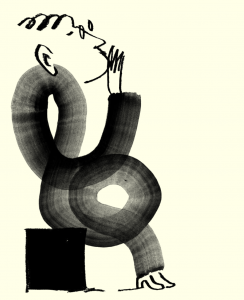Join us for a trans-Atlantic phone call with photographer Jon Crispin, who takes us deeper into his project documenting the suitcases of Willard Asylum’s residents
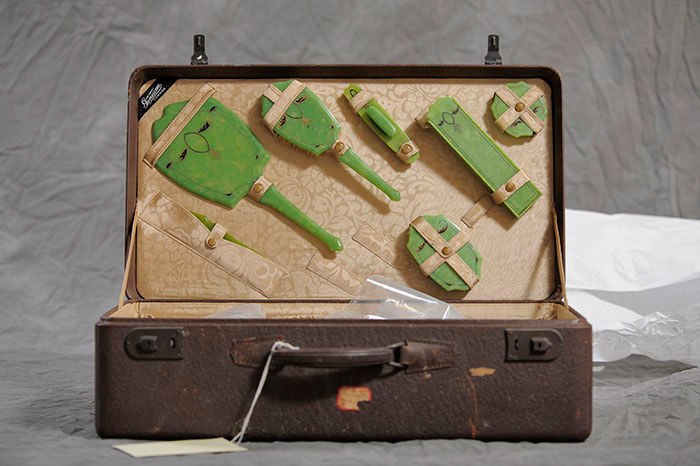
Last month, we released episode four of The Port Podcast, focusing on the evocative story of New York State’s first psychiatric hospital, Willard Asylum for the Chronic Insane. The hospital, a sprawling complex of grand Victorian buildings, opened its doors in October 1863, and was at the time considered unorthodox, using its setting of nearby Seneca Lake and its surrounding natural woodlands as an environment in which to ‘rehabilitate’ patients in tranquillity.
Home to more than 50’000 people over the span of more than a century, the hospital finally closed its doors in 1993, whereby a discovery was made: in an attic, 400 suitcases of residents – patients who had been committed to the asylum and had died there – were found, nearly stored on custom-build shelving units. These suitcases are time capsules, offering an insight into a by-gone era of psychiatry (and social regulations). Over a trans-Atlantic phone call, Betty Wood talks to photographer Jon Crispin, who’s spent the last few years documenting these suitcases and learning about their owners.
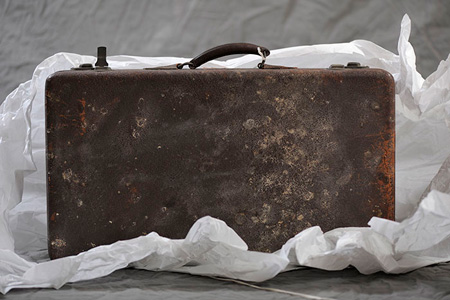
Betty Wood: I’ve spent the last year or so following the progress of the Willard Suitcase project; how did it come about?
Jon Crispin: I started shooting the project in March of 2011, but I’d been aware of the suitcases for quite a long time before that. The New York State Museum exhibited six or seven of the cases back in 2004, with a little bit of history of each of the patients’ cases that were featured.
At that time there was a photographer who had access to the cases: her approach different than mine. She photographed them in a very stylised manner, putting things out in a field with grass around them… I felt that I wanted a more direct approach – I put in a request to begin documenting them, and as there was no funding for it, I came across the idea of putting up a Kickstarter proposal. I raised enough money to cover my expenses and pay an assistant to help me out… In March 2011, I started shooting.
“The Museum made arrangements to have the suitcases moved to the Rotterdam storage facility, where staff have catalogued each one, and have carefully wrapped and preserved their contents”. This suitcase belongs to Freda B, and was the first Jon photographed.
“Josephine S. was 25 years old when she was admitted to Willard in 1898. There weren’t a whole lot of her possessions in this case, but what was there was pretty amazing. A few photographs, 3 books, and not much more. The hairbrush is quite lovely as is the small piece of fabric with her name and some numbers written on it (by I presume the staff at Willard). The plate is hand painted. Josephine died at Willard in 1973 at the age of 100.”
Betty: Have you been shooting since then?
Jon: I stopped shooting in September of 2012 in order to get ready for the exhibit at the Exploratorium in San Francisco, The Changing Face of What is Normal. That exhibit will be up for another year and deals with Willard and the suitcases, the general idea of mental illness and social difference. I have about a third of the exhibit. One of the other thirds is Karen Miller’s work , her poems and narratives about some of the patients.
Betty: Are you still on a hiatus from the project?
Jon: No. About a month ago, I received permission from New York State Museum to go back and start the project up again.
The Exploratorium was a really big deal for me and I knew that if I was continuing to shoot while I was trying to edit and print for it, I would go crazy. Now I’m back shooting; there are over 400 cases, and I have photographed about 90 of them. I will start spending three or four days a week in Albany to finish up over the next year, but that’s contingent on being able to raise enough funds to be able to do it.
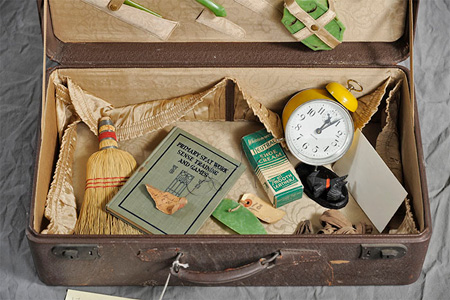
Betty: Are there any specific high (or low) points from the project that stand out in your mind?
Jon: The suitcases and the contents are just overwhelmingly evocative. It’s the thing that I’ve done in my life as a photographer that that’s gone much further than anything else. I get asked whether I have a favourite case – I tend not to think of this project in terms of highs and lows so much. I think of all of the images as a whole rather than as specific images.
I will say though that the very first day that I set up my background, I put the first case on it and started taking pictures… It really was for me the opening of a door that was just incredible. I still think about that day, about the feeling that I got opening that first case and seeing those beautiful . That case was Frieda’s, with its purpose built spaces for the green hairbrushes…
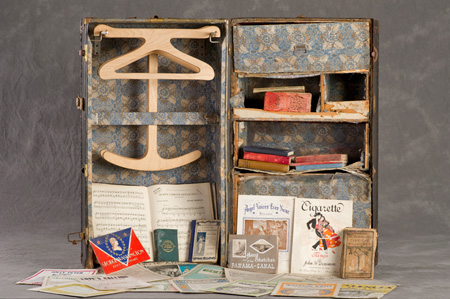
Betty: Where are the suitcases stored now?
Jon: They are stored in a facility that the museum has . They seem, to me, to be committed to keeping them, but, you just never know. It’s a state institution; money is very tight… The state is de-accessioning some items in the collection, though they would never be able to sell because of their historic importance, and the emotional connection that exists between the cases and the people that owned them, and their legacy.
Most of the people that owned these cases are buried in the cemetery right across the street from the grounds of the asylum in numbered graves with no names. There’s a big push now to get those people recognised, to put names on the graves. That’s a whole other issue thought that I’m only peripherally involved with…
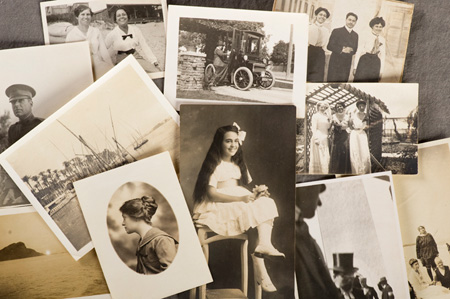
Betty: You’re aware of a lot of the back-stories of the patients – are there any that struck a particular emotional chord for you?
Jon: There are. Again, it’s not so much specific as it is general. Every time I’m done for the day, I carry with me what I know about these people. Karen Miller, has complete access to the archives – New York State has every patient record for anyone who was every admitted to the psych centres, and those records start in the 1850s – she can read all about these people. My interest lies in the object themselves, in what these people brought with them. I’m more affected by what I see in the cases and what I photograph rather than what I already know about them.

Contents from Irma M.’s cases: “Irma had several cases, and most of her possessions were in museum boxes. Irma led a very interesting life and it is clear that she spent time in both Europe and North America. It appears from her papers that she taught both music and languages in New York City after she moved to the US from Europe. It is interesting that the composer Jack Bauer signed this one (bottom) with such a nice dedication . She was quite a collector… There was a large collection of family snapshots.”
Betty: Was this always the case?
Jon: When I first started, I really though I wanted to include as much biographical information about the people who owned the cases as I could, and then I started realising that I became less interested in knowing their real story than in learning their story from what they brought with them. I received an amazing comment on my blog from a woman saying she actually preferred not to know about this because, for her, it was more important to be able to build her own idea of the lives of these people.
In the 1920s and 30s and 40s, people were put into these institutions for reasons that they would never be put into now. It can be very heartbreaking. People who were so sad because they’d lost a parent or a child, and they just shut down. It just basically seems unfair in many ways even though I’m fully aware and sure that, primarily, the people who worked at Willard really cared about these folks and tried to help them. But it’s still very sad, and so for me, looking at the things they brought with them builds a more complete life than just a diagnosis of schizophrenia, or manic depression, or whatever…Maybe it’s a way that I can protect myself, but as an artist, all I’m interested in is being able to convey some sort of emotion with my photographs. And these objects are themselves able to convey that emotion. I don’t really mind what people take from it, I just want people to be affected by it.
Betty: Has working on the Willard Suitcase Project challenged your views of mental illness and its treatment in the US?
Yes. I’ve been around this forever – I started photographing abandoned asylums back in the 1980s. I once came across a list of the ten most common reasons people were put into asylums, and in 1980s most of my friends had at least two or three of the things on the list! At the time I started realising mental illness is a subjective diagnosis. When people were kicked out of the asylums in the 1970s during this period of deinstitutionalisation, it was awful. These people are still on the streets. They should be taken care of. When the state built these asylums in the 19th century, they were really trying to help people; they built these amazing buildings where they were trying to help people – that sort of thing doesn’t happen anymore.
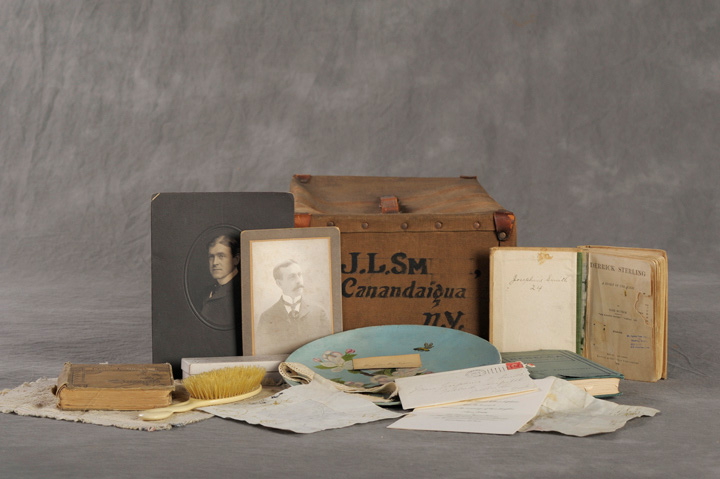
Contents of Freda B’s case. “I like the idea of documenting the care and energy that the Museum has put into them. And I am totally wigged out by being able to photograph a representation of the lives of people who struggled so much to make it in a very stressful and confusing world.”
Photography: Jon Crispin
Further reading:
Exploratiorium: The Changing Face of What is Normal
Jon Crispin on WordPress
The Port Podcast – Episode 04: Willard Asylum for the Chronic Insane
The Willard Suitcase Exhibit online
